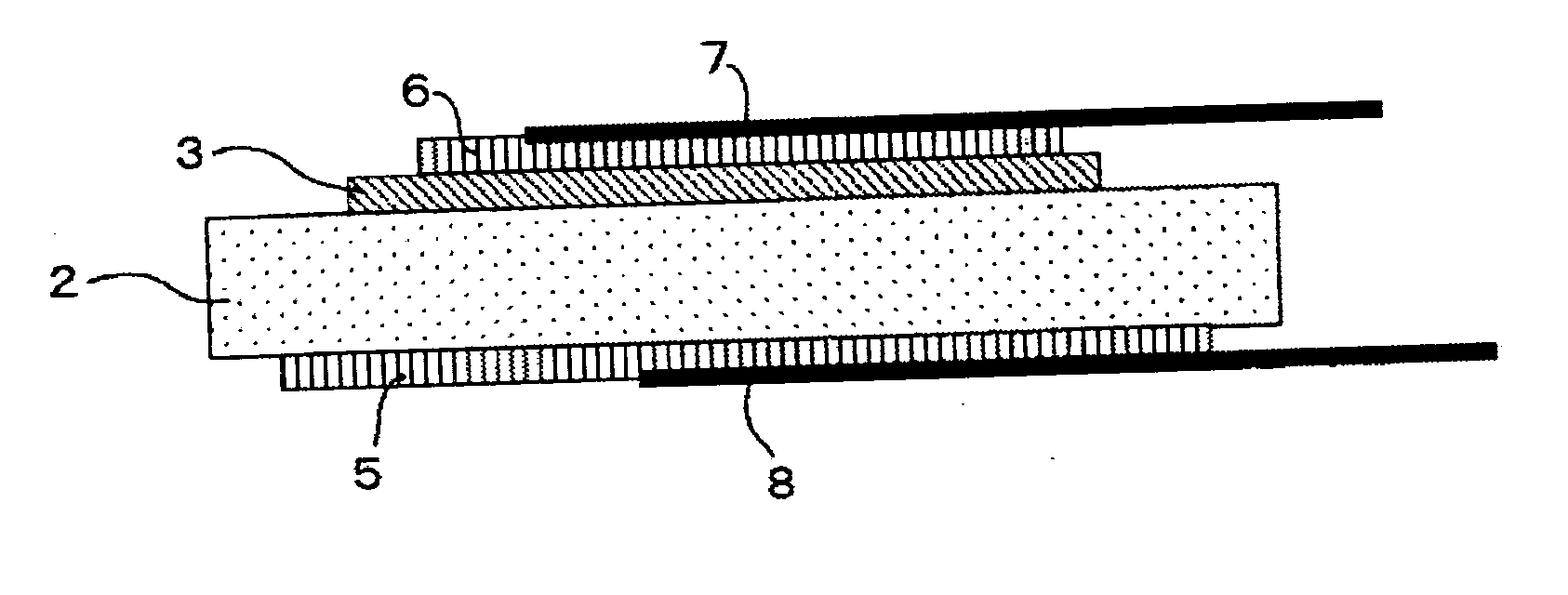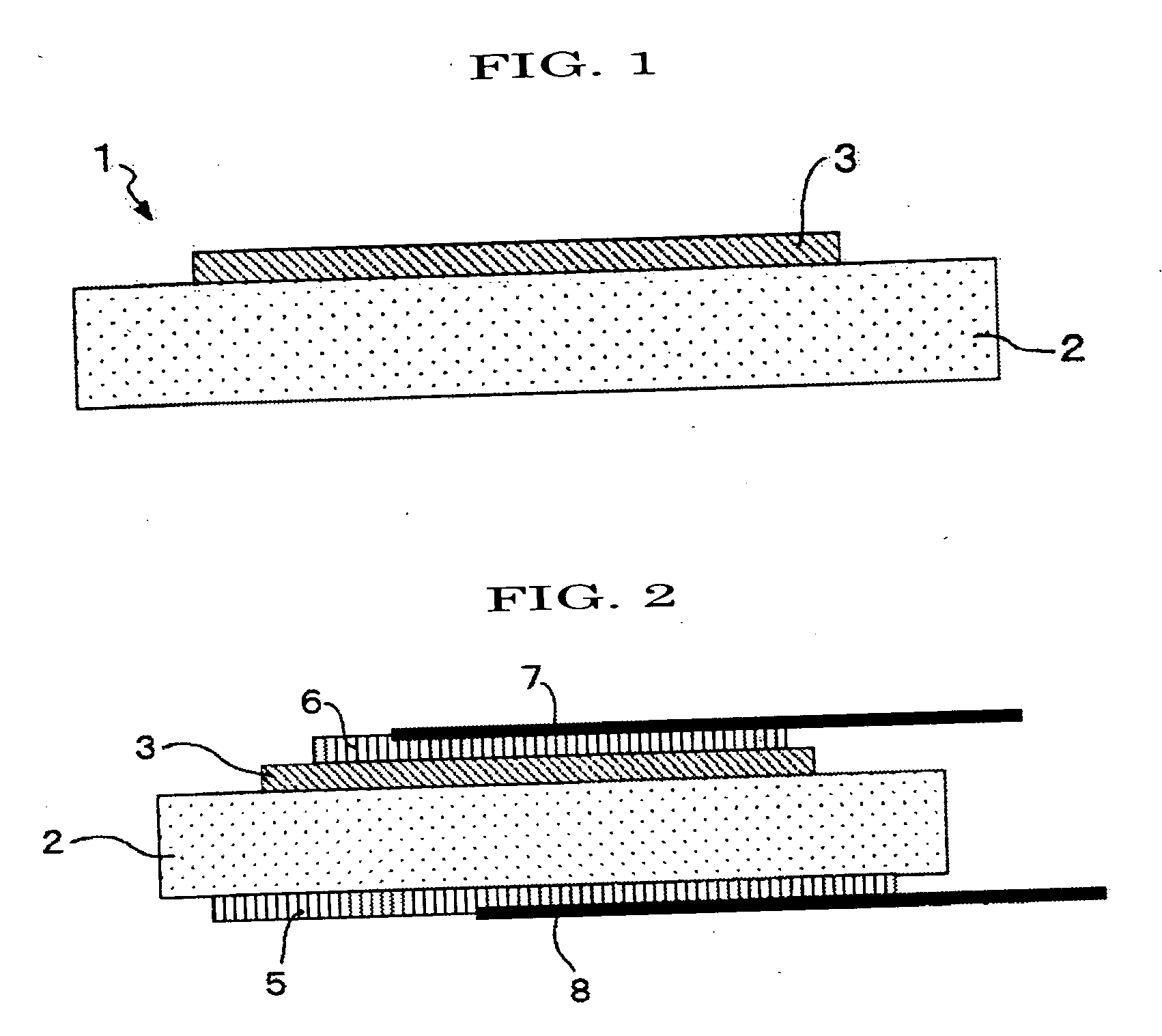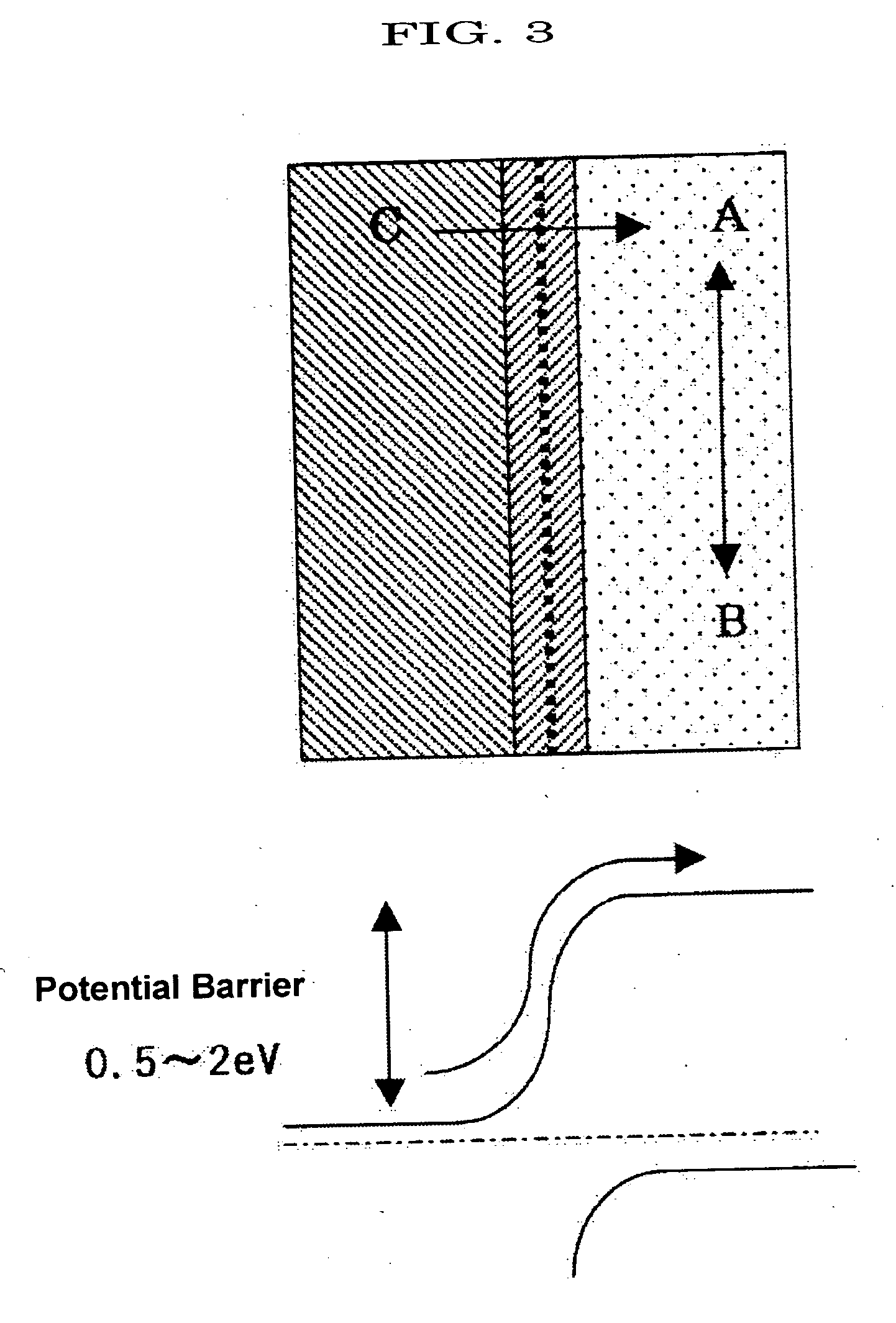Thermistor Device
a technology of thermosensors and resistors, which is applied in the direction of resistors, positive temperature coefficient thermistors, semiconductor devices, etc., can solve the problems of small resistance difference at or near operating temperature drawback, poor high-speed response to temperature change, and small on/off ratio, etc., to achieve high on/off ratio, small size, and high temperature response speed
- Summary
- Abstract
- Description
- Claims
- Application Information
AI Technical Summary
Benefits of technology
Problems solved by technology
Method used
Image
Examples
example 1
[0051] ZnO (thickness: 400 nm) was used as the second layer, and a (V0.988Cr0.011)2O3 polycrystal was prepared by an arc melting process as the first layer on the ZnO, obtaining a (V0.988Cr0.011)2O3 / ZnO junction type thermistor device A-1. For this device A-1, a change in current-voltage property (I-V property) depending on temperature was measured.
[0052] The I-V property of the device A-1 is linear below the phase transition temperature (TM-I=290 K) of (V0.988Cr0.011)2O3, and shows non-linearity at 290 K or higher. FIG. 4 shows a result at 250 K as the I-V property of the device A-1 at 290 K or lower, and a result at 306 K as the I-V property at 290 K or higher, suggesting formation of a potential barrier at the interface between the first and second layers of the device A-1. In the I-V property of the device A-1, current passing through the interface is out of the ohmic property up to around 0.7 V at temperatures of 290 K or higher (for example, result at 306 K in FIG. 4), and no...
example 2
[0055] Since a commercially available V2O3 powder is oxidized and its stoichiometry deviation would be occurred during preservation, it was reduced by heating at 900° C. for 5 hours under a reducing atmosphere (Ar:H2=95:5 (volume ratio)) to return to stoichiometric composition. The composition was confirmed by X-ray diffraction.
[0056] Chromium nitrate nona-hydrate was weighed in stoichiometric amount (1 mol %), and mixed well with a reducing agent V2O3 powder by wet mixing using acetone so that V:Cr=99:1 (atom %). After mixing, the mixture was calcined at 900° C. for 10 hours under a reducing atmosphere (Ar:H2=95:5 (volume ratio)), obtaining a polycrystalline powder by a solid phase reaction. Thereafter, the powder was mixed well again.
[0057] 0.6 g of the resulting polycrystalline powder and tellurium chloride (TeCl4) as a transporting agent were added into a quartz tube having a total length of 200 mm with a diameter of 12.5 mm, and the tube was sealed under vacuum (approximately...
PUM
 Login to View More
Login to View More Abstract
Description
Claims
Application Information
 Login to View More
Login to View More - R&D
- Intellectual Property
- Life Sciences
- Materials
- Tech Scout
- Unparalleled Data Quality
- Higher Quality Content
- 60% Fewer Hallucinations
Browse by: Latest US Patents, China's latest patents, Technical Efficacy Thesaurus, Application Domain, Technology Topic, Popular Technical Reports.
© 2025 PatSnap. All rights reserved.Legal|Privacy policy|Modern Slavery Act Transparency Statement|Sitemap|About US| Contact US: help@patsnap.com



